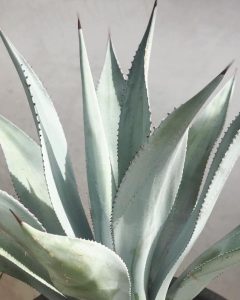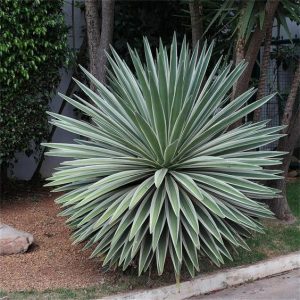- English
- Chinese
- French
- German
- Portuguese
- Spanish
- Russian
- Japanese
- Korean
- Arabic
- Irish
- Greek
- Turkish
- Italian
- Danish
- Romanian
- Indonesian
- Czech
- Afrikaans
- Swedish
- Polish
- Basque
- Catalan
- Esperanto
- Hindi
- Lao
- Albanian
- Amharic
- Armenian
- Azerbaijani
- Belarusian
- Bengali
- Bosnian
- Bulgarian
- Cebuano
- Chichewa
- Corsican
- Croatian
- Dutch
- Estonian
- Filipino
- Finnish
- Frisian
- Galician
- Georgian
- Gujarati
- Haitian
- Hausa
- Hawaiian
- Hebrew
- Hmong
- Hungarian
- Icelandic
- Javanese
- Kannada
- Kazakh
- Khmer
- Kurdish
- Kyrgyz
- Latin
- Latvian
- Lithuanian
- Luxembou..
- Macedonian
- Malagasy
- Malay
- Malayalam
- Maltese
- Maori
- Marathi
- Mongolian
- Burmese
- Nepali
- Norwegian
- Pashto
- Persian
- Punjabi
- Serbian
- Sesotho
- Sinhala
- Slovak
- Slovenian
- Somali
- Samoan
- Scots Gaelic
- Shona
- Sindhi
- Sundanese
- Swahili
- Tajik
- Tamil
- Telugu
- Thai
- Ukrainian
- Urdu
- Uzbek
- Vietnamese
- Welsh
- Xhosa
- Yiddish
- Yoruba
- Zulu
- Kinyarwanda
- Tatar
- Oriya
- Turkmen
- Uyghur

Agati bụ osisi ochie na nke pụrụ iche nwere ike na-adịgide adịgide na mmachi na-ekuba ume. Inwe nke dị afọ iri isii na ise, ihe ọkụkụ ahụ abụghị naanị mara mma mana ọ nwekwara ọtụtụ ọdịnala na akụkọ ọdịnala.

Agave nkọwa
Akụkọ banyere agave: mmalite
About sixty million years ago, the history of agave might have started with the first world’s creation. This plant had already begun to thrive in the relatively ancient geological era during that historical time. Originally native to tropical America, especially in dry and semi-arid areas of Mexico, the southern portion of the United States, and Central America, agave is a plant Agave, a member of the genus Agave and belonging to the family Asparagaceae, has gradually evolved its unique growth patterns and leaves over its evolutionary background.
Mara na agave
Agwa akwukwo
The Agave plant’s leaves are strong and rather beautiful. Their dark brown spiked stiffness at the tip shapes them like a succulent rosette. Furthermore, the leaf margins include small thorns-like teeth. Agave’s wild character comes from these elements, which also give it a somewhat unique appearance. As the plant ages, the crown breadth of the leaves increases steadily, producing an even more breathtaking visual impact.
Njirimara nke flossim
Site na ihe ndekọ maka inflorescence kacha elu na-edekọ ihe ruru mita 3.9, osisi agave nwere ezigbo ngosipụta na ihe ngosipụta. Ifuru ahihia siri ike ma mepụta nnukwu panic mgbe ntoju na-aga n'ihu. Ọ nwekwara nnukwu okooko osisi ma mara mma nke ukwuu. Ọ bụ ezie na agave ọ bụla agave dị iche, nke dị ogologo na ume na-enyere ha aka ịbịaru ndị mmadụ.
Imegide unwu na ihe banyere imeghari
Agave nwere nnukwu ntachi obi maka ma oke ọkụ na oke ọkụ ma nwee ike ịba ụba na-edozi ahụ. Ebe ha na-eru nso, mgbọrọgwụ ha nwere ike ịbịaru mmiri si n'ala. Ọ na - abụkarị nke nwayọ, agave na-ewe afọ asaa ruo afọ iri na anọ iji ruo n'oge iwe iwe. Afọ ndụ ya ruo afọ asatọ ruo iri anọ.
Agave nwere ọgwụ ọgwụ.
Agave nwere uru pụrụ iche na usoro nke ịchọ mma yana ụfọdụ ọgwụ. N'etiti ọgwụ ndị a na-ejikarị maka ihe a - nke nwere njiri mara dị ọkụ, na-atọ ụtọ, na iwepụ, ọgwụ na-egbu egbu, na hemostasis. N'ime nsogbu a na-emeso ọgba aghara na ọgwụ ọdịnala bụ carbuncle, scabies, akwara ọbara, ọnya isi, na ihe mgbochi. Plantide na-amịghị n'ime ha. Njirimara ọgwụ ndị a na-enyere Agave aka dị ezigbo mkpa na mpaghara ọgwụ ọdịnala.
Agave bụ ezigbo azụmahịa dị mma yana akara ọdịbendị.
Ọgbọ nke Tequila
Isi mmalite Raw na-arụ ọrụ na nmepụta tequila bụ shuga shuga-nwere agave na-etolite. Otu mmanya mere na Mexico nke a maara nke ọma maka uto dị egwu na ịdị larịị bụ tequila. Malite na owuwe ihe ubi na nhazi nke agave ma na-arụ ọrụ site na ịgba ụka na distillation, nzọụkwụ ọ bụla nke usoro ịhazigharị chọrọ nlebara anya. Nzọụkwụ ọ bụla na yinye na-eburu akụkọ ihe mere eme na ọdịbendị.
Ihe nnọchianya nke mmepe
Agave is, most people agree, the “national plant” of Mexico. Furthermore deeply embedded in Mexico’s history and culture is it, which represents the pride Mexicans have for their nation. Apart from its great reputation in China, tequila, the national wine of Mexico, shows to the rest of the globe the unique style and appeal Mexico is renowned for.
Na-eji agave na ịkọ ahịhịa
Usoro ọrụ ugbo
Agave nwere ike ịkụziri nke ọma na akọrọ ọnọdụ, n'ihi ya, a na-adụ ya ọdụ ka ọ rụọ ọrụ aja aja nke ọma na ịkọ ugbo. Agave ebubatala ma zụlite n'ọtụtụ mbibi na ebe ndịda na ndịda ọdịda anyanwụ China, ọkachasị na Yunnan, ebe ọ nwere ike itolite ike ya zuru ezu ma na-amị mkpụrụ. Ebe ọ bụ na ndagwurugwu ndị a kpọrọ nkụ na-enye usoro uto dị mma, gburugburu agav zuru oke maka mmepe.
Ornamental nkọwa na ọrụ etinyere
Agave bụ osisi mara mma na ubi n'ihi ịdị elu ya nke inflorescence na akwụkwọ epupụta. Agave nwere ike igosi njirimara ya na-adọrọ mmasị ma na-eme ihe pụrụ iche ma ejiri ya mee ihe dị ka ogige nke oghere akwụkwọ ndụ dị ka ogige, ifuru ifuru. Nke a bụ nnukwu nhọrọ maka ịchọ mma n'ọtụtụ gburugburu ebe obibi dị iche iche n'ihi na onyụrụ akwụkwọ na-enweghị nchịkwa unwu.
Agave’s consumable and other uses
Historical accounts of Central America indicate that agave has been used there for thousands of years. Traditionally, people have ate the soft, white meristem found at the agave plant’s stem or base. Starch abound in this meristem. Two other ways to enjoy agave are baking and cooking. People living in the northern part of Mexico also feed animals agave leaves. Agave’s versatility makes it more important in modern usage as well as in traditional ones.

Agave Group
Na akụkọ dị ogologo, njirimara pụrụ iche, na nnukwu ọdịbendị, agave - agave - agave - Agave 10 afọ - aghọọla onye ọkpụkpọ na osisi ornamental. N'ọtụtụ mgbasa, gụnyere ọgwụ ọgwụ ya, onyinye akụ na ụba ya, na mmetụta na mmetụta na onyonyo ọdịnala, agave egosila na ọ dị mkpa na ọ dị mkpa. N'otu oge ahụ ka ọ bụ osisi nwere ihe mere eme na ọgbara ọhụrụ, ọ bụkwa gem na gem hụrụ n'anya gburugburu. Ozugbo anyị ghọtara akụkọ ihe mere eme na ojiji nkegave, anyị ga-erubere ya uru ma chebe osisi a pụrụ iche.



